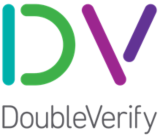Ad fraud continues to be a significant issue in CTV
Thursday, May 18th, 2023
CTV Ad Fraud Surges with a 69% Increase in Bot Fraud in 2022 and Significant Growth in CTV Fraud Schemes
- DV’s annual report spotlights the importance of constant protection to tackle quality issues across emerging ad platforms as well as newly-available attention-based metrics
NEW YORK — DoubleVerify (“DV”) (NYSE: DV), a leading software platform for digital media measurement, data and analytics, today released its 2023 Global Insights Report, analyzing trends from nearly 5.5 trillion media transactions across over 1,000 customers in nearly 100 countries. The report highlights key digital ad quality trends, and demonstrates the need for always-on verification across channels to create the foundation for impactful performance.
One of the major takeaways from this year’s report is that ad fraud continues to be a significant issue in CTV, especially for unprotected advertisers. Globally, eMarketer estimates that advertisers will spend almost $24 billion on CTV advertising this year. As ad investments in CTV grow, so too does the opportunity for fraud. CTV ad fraud involves the use of deceptive tactics to generate revenue from advertisers by falsely inflating video ad impressions. Fraudsters typically employ bots or fake CTV devices to simulate viewership, tricking advertisers into paying for non-existent or unviewed ad placements.
DV’s Global Insights Report found that bot fraud on CTV surged 69 percent in 2022 compared with the year prior. And the number of CTV fraud schemes and variants DV detected annually has tripled since 2020. For unprotected advertisers, the risk is significant. To quantify the risk, DV compared protected advertisers’ fraud rates against a campaign where verification was not in place. The unprotected campaign experienced a fraud rate of 11.2 percent compared with 0.6 percent for protected campaigns – a difference of nearly 18x.
“An increase in free, ad-supported streaming is helping to fuel Connected TV’s rapid growth,” said Mark Zagorski, CEO of DoubleVerify. “But with growth come growing pains. As CTV becomes a top channel for consumers and advertisers alike, it also becomes a target for fraud, making measurement and protection a critical part of validating the efficacy of campaigns.”
In addition to a review of fraud, viewability and brand suitability, this year’s report also took a deep dive into attention metrics. Launched in 2021, DV Authentic Attention® measurement is an MRC accredited privacy-friendly solution that does not rely on cookies, and provides timely, impression-level insights at scale – from the impact of an ad’s presentation to key dimensions of consumer engagement.
Amid economic uncertainty and identity deprecation, advertisers are increasingly turning to attention-based measurement to help optimize campaign performance and enhance ROI. Key insights DV uncovered include:
- Campaigns in the most mature market, North America, lag behind in their ability to grab attention (based on DV’s Attention Index), representing a real opportunity for improvement.
- For video, specifically, North America is behind all other regions in both attention and viewability.
- Most advertisers run campaigns on sites or apps that have lower attention rates; however, DV’s analysis shows there is significant available inventory that could deliver higher attention and performance.
“Qualifying an ad’s impact matters more than ever before and attention is fast becoming a key currency for evaluating performance,” added Zagorski. “Our metrics make attention actionable for brands. They can gain insights beyond whether their ad simply had an opportunity to be seen — they can start to understand if it resonated, while benchmarking across the industry.”
In addition to its findings on CTV fraud and attention, DV’s Global Insights Report features new data on the ROI of verification, and the need to ensure consistent quality assurance across all platforms, environments and formats.
Links: DoubleVerify
Latest News
- Barb to start reporting TV-set viewing of YouTube channels
- SAT FILM selects multi-DRM from CryptoGuard
- Qvest and ARABSAT to launch OTT streaming platform
- ArabyAds & LG Ad Solutions partner with TVekstra in Turkey
- Freeview NZ satellite TV service to move to Koreasat 6
- Comscore expands YouTube CTV measurement internationally
